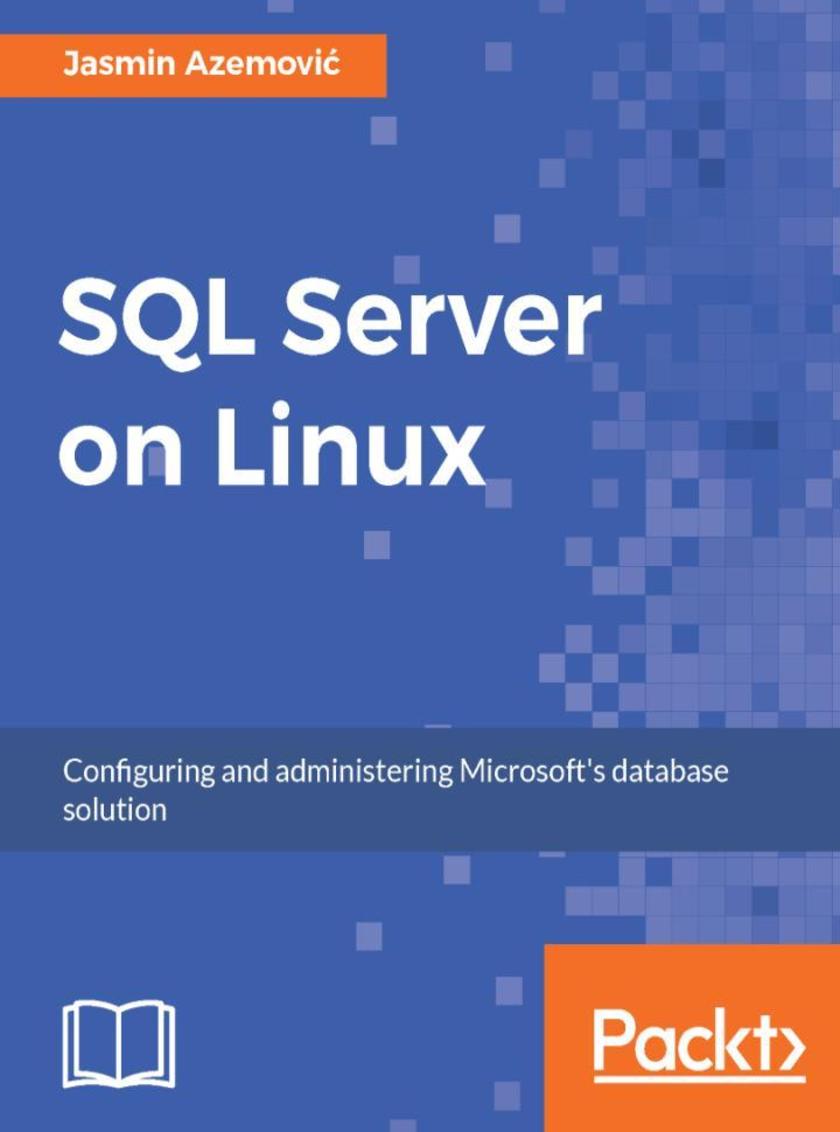
SQL Server on Linux
¥71.93
Bring the performance and security of SQL Server to Linux About This Book ? Design and administer your SQL Server solution on the open source Linux platform ? Install, configure, and fine-tune your database application for maximum performance ? An easy-to-follow guide teaching you how to implement various SQL Server CTP 2.x offerings on Linux—from installation to administration Who This Book Is For This book is for the Linux users who want to learn SQL Server on their favorite Linux distributions. It is not important if you are experienced database user or a beginner as we are starting from scratch. However, it is recommended that you have basic knowledge about relational models. More advanced readers can pick the chapters of their interest and study specific topics immediately. Users from Windows platform can also benefit from this book to expand their frontiers and become equally efficient on both platforms. What You Will Learn ? Install and set up SQL Server CTP 2.x on Linux ? Create and work with database objects using SQL Server on Linux ? Configure and administer SQL Server on Linux-based systems ? Create and restore database back-ups ? Protect sensitive data using the built-in cryptographic features ? Optimize query execution using indexes ? Improve query execution time by more than 10x using in-memory OLTP ? Track row-versioning using temporal tables In Detail Microsoft's launch of SQL Server on Linux has made SQL Server a truly versatile platform across different operating systems and data-types, both on-premise and on-cloud. This book is your handy guide to setting up and implementing your SQL Server solution on the open source Linux platform. You will start by understanding how SQL Server can be installed on supported and unsupported Linux distributions. Then you will brush up your SQL Server skills by creating and querying database objects and implementing basic administration tasks to support business continuity, including security and performance optimization. This book will also take you beyond the basics and highlight some advanced topics such as in-memory OLTP and temporal tables. By the end of this book, you will be able to recognize and utilize the full potential of setting up an efficient SQL Server database solution in your Linux environment. Style and approach This book follows a step-by-step approach to teach readers the concepts of SQL Server on Linux using the bash command line and SQL programming language trough examples which can easily be adapted and applied in your own solutions.
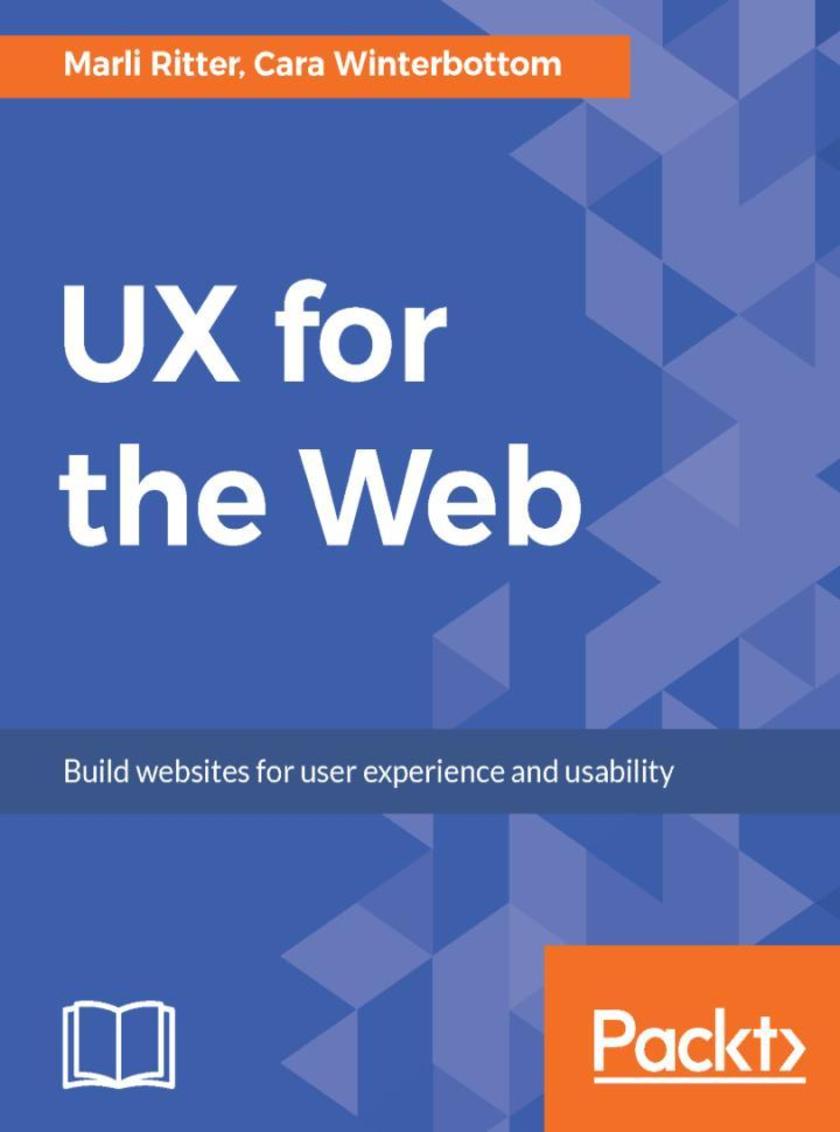
UX for the Web
¥71.93
Learn how UX and design thinking can make your site stand out from the rest of the internet. About This Book ? Learn everything you need to know about UX for your Web Design. ? Design B2B, B2C websites that stand out from the competitors with this guide ? Enhance your business by improving customer accessibility and retention. Who This Book Is For If you’re a designer, developer, or just someone who has the desire to create websites that are not only beautiful to look at but also easy to use and fully accessible to everyone, including people with special needs, UX for the Web will provide you with the basic building blocks to achieve just that. What You Will Learn ? Discover the fundamentals of UX and the User-Centered Design (UCD) Process. ? Learn how UX can enhance your brand and increase user retention ? Learn how to create the golden thread between your product and the user ? Use reliable UX methodologies to research and analyze data to create an effective UX strategy ? Bring your UX strategy to life with wireframes and prototypes ? Set measurable metrics and conduct user tests to improve digital products ? Incorporate the Web Content Accessibility Guidelines (WCAG) to create accessible digital products In Detail If you want to create web apps that are not only beautiful to look at, but also easy to use and fully accessible to everyone, including people with special needs, this book will provide you with the basic building blocks to achieve just that. The book starts with the basics of UX, the relationship between Human-Centered Design (HCD), Human-Computer Interaction (HCI), and the User-Centered Design (UCD) Process; it gradually takes you through the best practices to create a web app that stands out from your competitors. You’ll also learn how to create an emotional connection with the user to increase user interaction and client retention by different means of communication channels. We’ll guide you through the steps in developing an effective UX strategy through user research and persona creation and how to bring that UX strategy to life with beautiful, yet functional designs that cater for complex features with micro interactions. Practical UX methodologies such as creating a solid Information Architecture (IA), wireframes, and prototypes will be discussed in detail. We’ll also show you how to test your designs with representative users, and ensure that they are usable on different devices, browsers and assistive technologies. Lastly, we’ll focus on making your web app fully accessible from a development and design perspective by taking you through the Web Content Accessibility Guidelines (WCAG). Style and Approach This is an easy-to-understand step-by-step guide with full of examples to that will help you in creating good UX for your web applications.
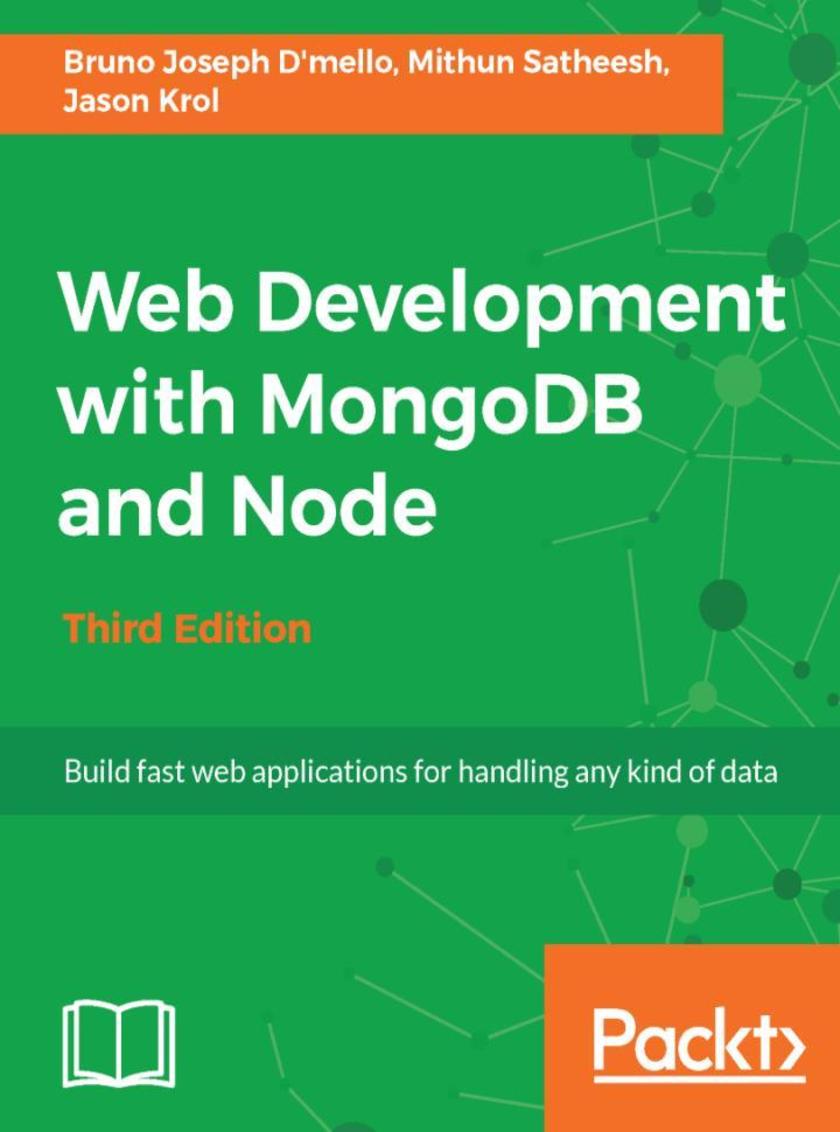
Web Development with MongoDB and Node - Third Edition
¥71.93
Use the two popular web development stacks, Node.js and MongoDB, to build full-featured web applications About This Book ? Learn the new ECMAScript along with Node 8 and MongoDB to make your application more effective. ? Get the up-to-date information required to launch your first application prototype using the latest versions of Node.js and MongoDB. ? A practical guide with clear instructions to designing and developing a complete web application from start to finish using trending frameworks such as angular4 and hapi Who This Book Is For The book is designed for JavaScript developers of any skill level who want to get up-and-running using Node.js and MongoDB to build full-featured web applications. A basic understanding of JavaScript and HTML is the only prerequisite for this book. What You Will Learn ? Work with Node.js building blocks ? Write and configure a web server using Node.js powered by the Express.js framework ? Build dynamic HTML pages using the Handlebars template engine ? Persist application data using MongoDB and Mongoose ODM ? Test your code using automated testing tools such as the Mocha framework ? Automate test cases using Gulp ? Reduce your web development time by integrating third-party tools for web interaction. ? Deploy a development environment to the cloud using services such as Heroku, Amazon Web Services, and Microsoft Azure ? Explore single-page application frameworks to take your web applications to the next level In Detail Node.js builds fast, scalable network applications while MongoDB is the perfect fit as a high-performance, open source NoSQL database solution. The combination of these two technologies offers high performance and scalability and helps in building fast, scalable network applications. Together they provide the power for manage any form of data as well as speed of delivery. This book will help you to get these two technologies working together to build web applications quickly and easily, with effortless deployment to the cloud. You will also learn about angular 4, which consumes pure JSON APOIs from a hapi server. The book begins by setting up your development environment, running you through the steps necessary to get the main application server up-and-running. Then you will see how to use Node.js to connect to a MongoDB database and perform data manipulations. From here on, the book will take you through integration with third-party tools to interact with web apps. You will see how to use controllers and view models to generate reusable code that will reduce development time. Toward the end, the book supplies tests to properly execute your code and take your skills to the next level with the most popular frameworks for developing web applications. By the end of the book, you will have a running web application developed with MongoDB, Node.js, and some of the most powerful and popular frameworks. Style and approach A practical guide with clear instructions to designing and developing a complete web application from start to finish
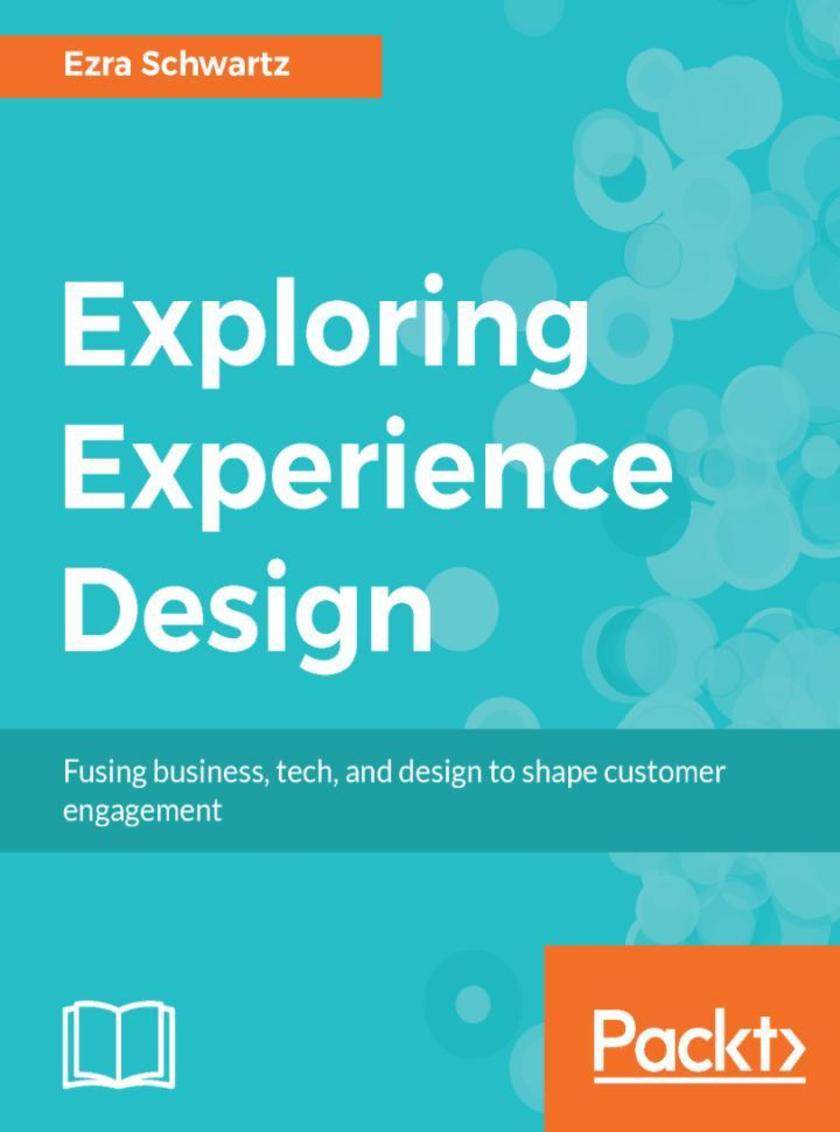
Exploring Experience Design
¥71.93
Learn how to unify Customer Experience, User Experience and more to shape lasting customer engagement in a world of rapid change. About This Book ? An introductory guide to Experience Design that will help you break into XD as a career by gaining A strong foundational knowledge ? Get acquainted with the various phases of a typical Experience Design workflow ? Work through the key process and techniques in XD, supported by most of the common use cases Who This Book Is For This book is for designers who wish to enter the field of UX Design, especially Programmers, Content Strategists, and Organizations keen to understand the core concepts of UX Design. What You Will Learn ? Understand why Experience Design (XD) is at the forefront of business priorities, as organizations race to innovate products and services in order to compete for customers in a global economy driven by technology and change ? Get motivated by the numerous professional opportunities that XD opens up for practitioners in wide-ranging domains, and by the stories of real XD practitioners ? Understand what experience is, how experiences are designed, and why they are effective ? Gain knowledge of user-centered design principles, methodologies, and best practices that will improve your product (digital or physical) ? Get to know your X’s and D’s—understand the differences between XD and UX, CX, IxD, IA, SD, VD, PD, and other design practices In Detail We live in an experience economy in which interaction with products is valued more than owning them. Products are expected to engage and delight in order to form the emotional bonds that forge long-term customer loyalty: Products need to anticipate our needs and perform tasks for us: refrigerators order food, homes monitor energy, and cars drive autonomously; they track our vitals, sleep, location, finances, interactions, and content use; recognize our biometric signatures, chat with us, understand and motivate us. Beautiful and easy to use, products have to be fully customizable to match our personal preferences. Accomplishing these feats is easier said than done, but a solution has emerged in the form of Experience design (XD), the unifying approach to fusing business, technology and design around a user-centered philosophy. This book explores key dimensions of XD: Close collaboration among interdisciplinary teams, rapid iteration and ongoing user validation. We cover the processes, methodologies, tools, techniques and best-practices practitioners use throughout the entire product development life-cycle, as ideas are transformed to into positive experiences which lead to perpetual customer engagement and brand loyalty. Style and approach An easy-to-understand guide, filled with real-world use cases on process, design, and techniques, helping you build a strong foundation in Experience Design.
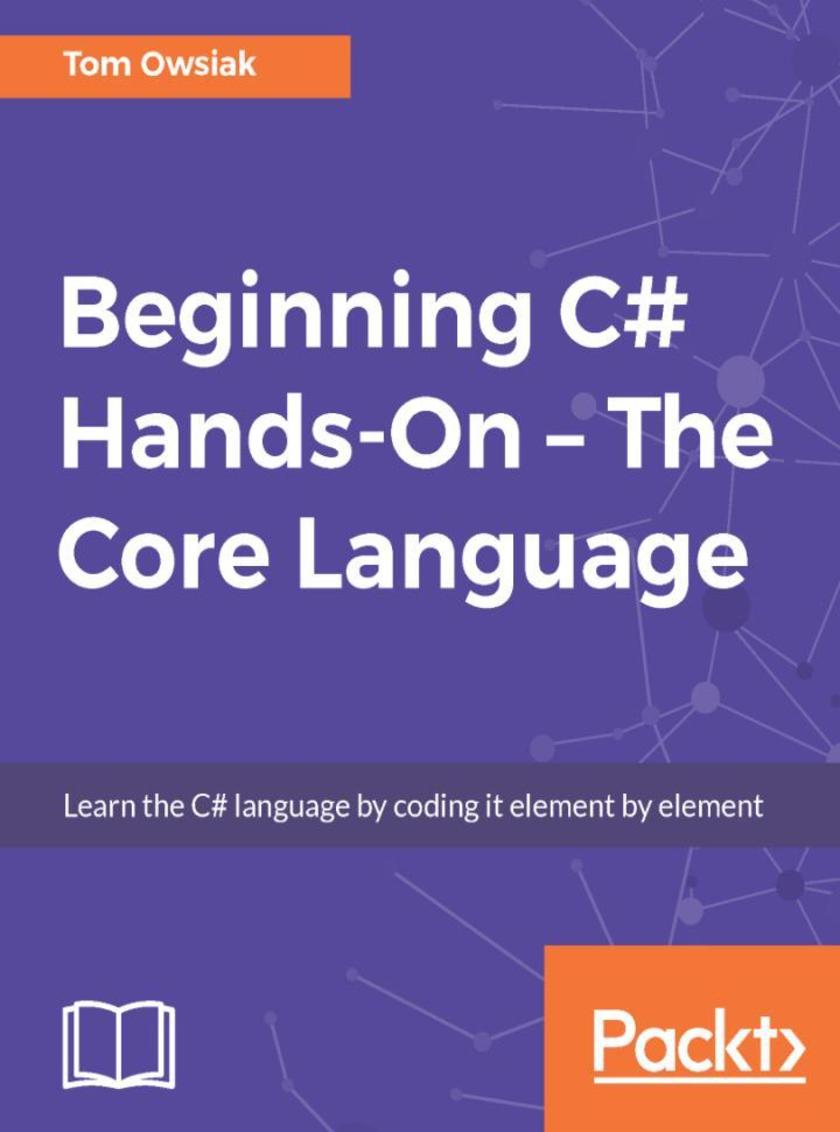
Beginning C# Hands-On - The Core Language
¥71.93
A C# beginners guide to the core parts of the C# language! About This Book ? Learn C#, Visual Studio, and Object Oriented Programming ? See practical examples of all the core C# language features so that you can easily master them yourself ? Use the C# programming language to work with code and data, which can be applied to other programming languages as well ? Complete a variety of programming assignments for hands-on practice, as you move through the course Who This Book Is For This book will appeal to anyone who is interested in learning how to program in C#. Previous programming experience will help you get through the initial sections with ease, although, it’s not mandatory to possess any experience at all. What You Will Learn ? Learn C#, Visual Studio, and object-oriented programming ? Learn all the core C# language syntax with hands-on working examples ? Learn everything from basic variable assignments to complex multidimensional arrays ? Go through practical examples of all the core C# language features so that you can easily master them yourself ? Use the C# programming language to work with code and data, which can be applied to other programming languages as well In Detail Beginning C# Hands-On - The Core Language teaches you core C# language and syntax in a working Visual Studio environment. This book covers everything from core language through to more advanced features such as object-oriented programming techniques. This book is for C# beginners who need a practical reference to core C# language features. You'll also gain a view of C# through web programming with web forms, so you'll learn HTML, basic CSS, and how to use a variety of controls, such as buttons and drop-down lists. You'll start with the fundamentals of C# and Visual Studio, including defining variables, interacting with users, and understanding data types, data conversions, and constants. You'll move on to checking conditions using if/else blocks, and see how to use loops to do things such as repeat blocks of code. After covering various operators to evaluate and assign control structures, you'll see how to use arrays to store collections of data. By the time you’ve finished the book, you’ll know how to program the vital elements of the core C# language. These are the building blocks that you can then combine to build complex C# programs. Style and approach A comprehensive book that blends theory with just the right amount of practical code implementations, to help you get up and running with the C# programming language. You’ll also get to work with other tools and technologies that complement C# programming. Each core part of the C# language is coded as you learn, and code output is tested every time to verify the syntax is working as expected, so it’s easy for you to learn directly from the working code examples.
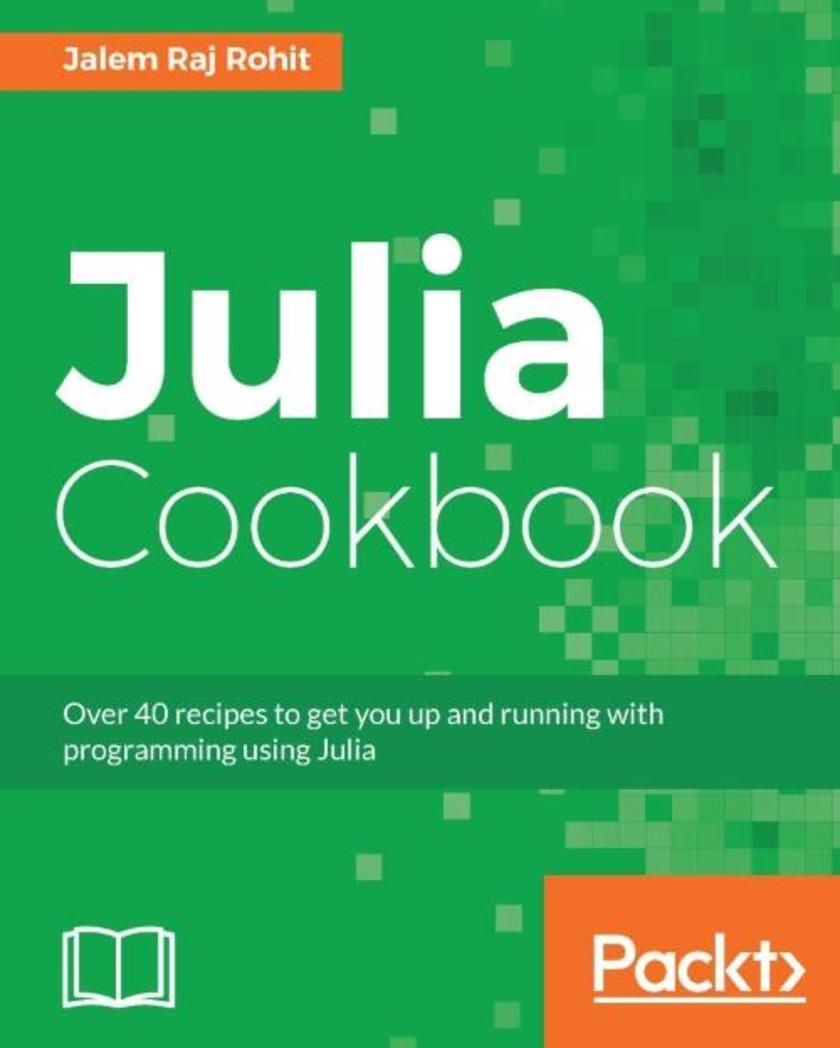
Julia Cookbook
¥71.93
Over 40 recipes to get you up and running with programming using Julia About This Book Follow a practical approach to learn Julia programming the easy way Get an extensive coverage of Julia’s packages for statistical analysis This recipe-based approach will help you get familiar with the key concepts in Juli Who This Book Is For This book is for data scientists and data analysts who are familiar with the basics of the Julia language. Prior experience of working with high-level languages such as MATLAB, Python, R, or Ruby is expected. What You Will Learn Extract and handle your data with Julia Uncover the concepts of metaprogramming in Julia Conduct statistical analysis with StatsBase.jl and Distributions.jl Build your data science models Find out how to visualize your data with Gadfly Explore big data concepts in Julia In Detail Want to handle everything that Julia can throw at you and get the most of it every dayThis practical guide to programming with Julia for performing numerical computation will make you more productive and able work with data more efficiently. The book starts with the main features of Julia to help you quickly refresh your knowledge of functions, modules, and arrays. We’ll also show you how to utilize the Julia language to identify, retrieve, and transform data sets so you can perform data analysis and data manipulation. Later on, you’ll see how to optimize data science programs with parallel computing and memory allocation. You’ll get familiar with the concepts of package development and networking to solve numerical problems using the Julia platform. This book includes recipes on identifying and classifying data science problems, data modelling, data analysis, data manipulation, meta-programming, multidimensional arrays, and parallel computing. By the end of the book, you will acquire the skills to work more effectively with your data. Style and approach This book has a recipe-based approach to help you grasp the concepts of Julia programming.
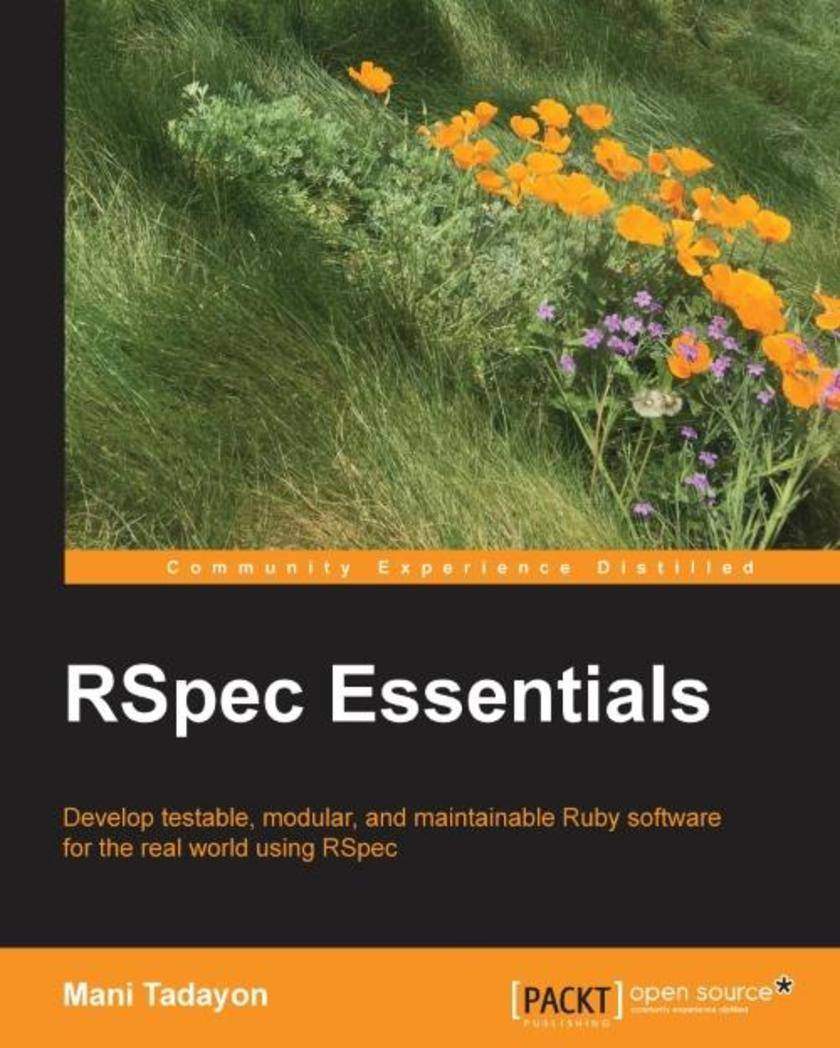
RSpec Essentials
¥71.93
Develop testable, modular, and maintainable Ruby software for the real world using RSpec About This Book Explore the concept of testability and how to implement tests that deliver the most value Maximize the quality of your Ruby code through a wide variety of tests Master the real-world tradeoffs of testing through detailed examples supported by in-depth discussion Who This Book Is For This book is aimed at the software engineer who wants to make their code more reliable and their development process easier. It is also aimed at test engineers who need to automate the testing of complex systems. Knowledge of Ruby is helpful, but even someone new to the language should find it easy to follow the code and tests. What You Will Learn Identify a unit of software for the purposes of testing Manage test states with hooks, fixtures, and mocks Handle external web services in tests using various techniques Configure RSpec flexibly and cleanly using support code and environment variables Interact with rich web apps in tests using Capybara Build the right feature with behavior-driven development Customize matchers and failure messages Verify correct development and production environments In Detail This book will teach you how to use RSpec to write high-value tests for real-world code. We start with the key concepts of the unit and testability, followed by hands-on exploration of key features. From the beginning, we learn how to integrate tests into the overall development process to help create high-quality code, avoiding the dangers of testing for its own sake. We build up sample applications and their corresponding tests step by step, from simple beginnings to more sophisticated versions that include databases and external web services. We devote three chapters to web applications with rich JavaScript user interfaces, building one from the ground up using behavior-driven development (BDD) and test-driven development (TDD). The code examples are detailed enough to be realistic while simple enough to be easily understood. Testing concepts, development methodologies, and engineering tradeoffs are discussed in detail as they arise. This approach is designed to foster the reader’s ability to make well-informed decisions on their own. Style and approach This comprehensive tutorial is packed with real-world examples of testing with RSpec. The most important features of RSpec are introduced in the early chapters and are used in examples of growing complexity in the following chapters. Concepts and methodologies are discussed in detail.
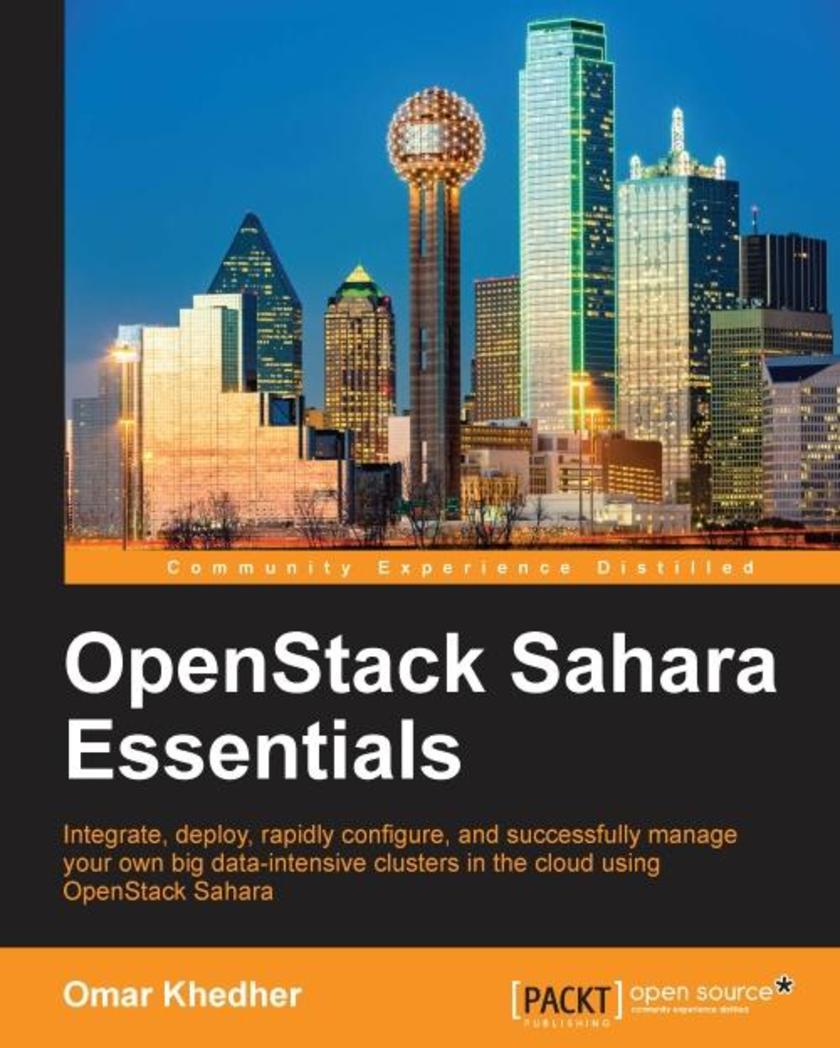
OpenStack Sahara Essentials
¥71.93
Integrate, deploy, rapidly configure, and successfully manage your own big data-intensive clusters in the cloud using OpenStack Sahara About This Book A fast paced guide to help you utilize the benefits of Sahara in OpenStack to meet the Big Data world of Hadoop. A step by step approach to simplify the complexity of Hadoop configuration, deployment and maintenance. Who This Book Is For This book targets data scientists, cloud developers and Devops Engineers who would like to become proficient with OpenStack Sahara. Ideally, this book is well suitable for readers who are familiars with databases, Hadoop and Spark solutions. Additionally, a basic prior knowledge of OpenStack is expected. The readers should also be familiar with different Linux boxes, distributions and virtualization technology. What You Will Learn Integrate and Install Sahara with OpenStack environment Learn Sahara architecture under the hood Rapidly configure and scale Hadoop clusters on top of OpenStack Explore the Sahara REST API to create, deploy and manage a Hadoop cluster Learn the Elastic Processing Data (EDP) facility to execute jobs in clusters from Sahara Cover other Hadoop stable plugins existing supported by Sahara Discover different features provided by Sahara for Hadoop provisioning and deployment Learn how to troubleshoot OpenStack Sahara issues In Detail The Sahara project is a module that aims to simplify the building of data processing capabilities on OpenStack. The goal of this book is to provide a focused, fast paced guide to installing, configuring, and getting started with integrating Hadoop with OpenStack, using Sahara. The book should explain to users how to deploy their data-intensive Hadoop and Spark clusters on top of OpenStack. It will also cover how to use the Sahara REST API, how to develop applications for Elastic Data Processing on Openstack, and setting up hadoop or spark clusters on Openstack. Style and approach This book takes a step by step approach teaching how to integrate, deploy and manage data using OpenStack Sahara. It will teach how the OpenStack Sahara is beneficial by simplifying the complexity of Hadoop configuration, deployment and maintenance.
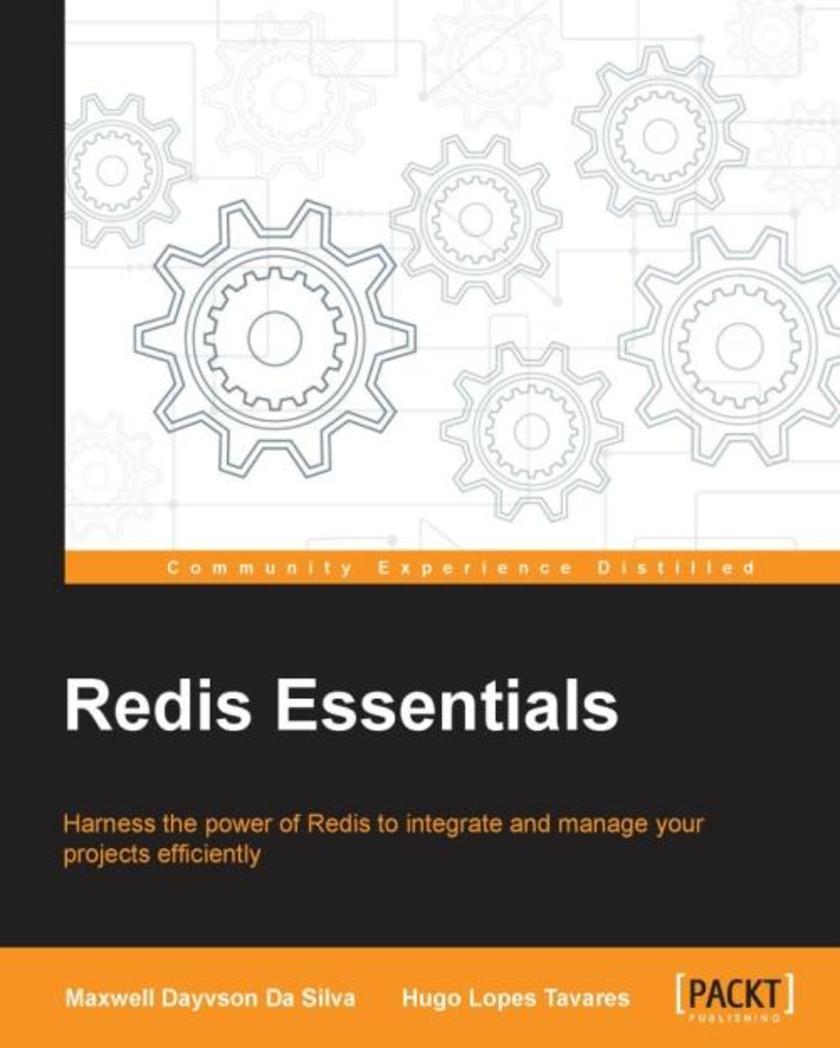
Redis Essentials
¥71.93
Harness the power of Redis to integrate and manage your projects efficiently About This Book Learn how to use Redis's data types efficiently to manage large data sets Scale Redis to multiple servers with Twemproxy, Redis Sentinel, and Redis Cluster A fast-paced guide, full of real-world examples to help you get the best out of the features offered by Redis Who This Book Is For If you are a competent developer with experience of working with data structure servers and want to boost your project's performance by learning about features of Redis, then this book is for you. What You Will Learn Build analytics applications using Bitmaps and Hyperloglogs Enhance scalability with Twemproxy, Redis Sentinel, and Redis Cluster Build a Time Series implementation in Node.js and Redis Create your own Redis commands by extending Redis with Lua Get to know security techniques to protect your data (SSL encryption, firewall rules, basic authorization) Persist data to disk and learn the trade-offs of AOF and RDB Understand how to use Node.js, PHP, Python, and Ruby clients for Redis Avoid common pitfalls when designing your next solution In Detail Redis is the most popular in-memory key-value data store. It’s very lightweight and its data types give it an edge over the other competitors. If you need an in-memory database or a high-performance cache system that is simple to use and highly scalable, Redis is what you need. Redis Essentials is a fast-paced guide that teaches the fundamentals on data types, explains how to manage data through commands, and shares experiences from big players in the industry. We start off by explaining the basics of Redis followed by the various data types such as Strings, hashes, lists, and more. Next, Common pitfalls for various scenarios are described, followed by solutions to ensure you do not fall into common traps. After this, major differences between client implementations in PHP, Python, and Ruby are presented. Next, you will learn how to extend Redis with Lua, get to know security techniques such as basic authorization, firewall rules, and SSL encryption, and discover how to use Twemproxy, Redis Sentinel, and Redis Cluster to scale infrastructures horizontally. At the end of this book, you will be able to utilize all the essential features of Redis to optimize your project's performance. Style and approach A practical guide that offers the foundation upon which you can begin to understand the capabilities of Redis using a step-by-step approach. This book is full of real-world problems and in-depth knowledge of the concepts and features of Redis, with plenty of examples.
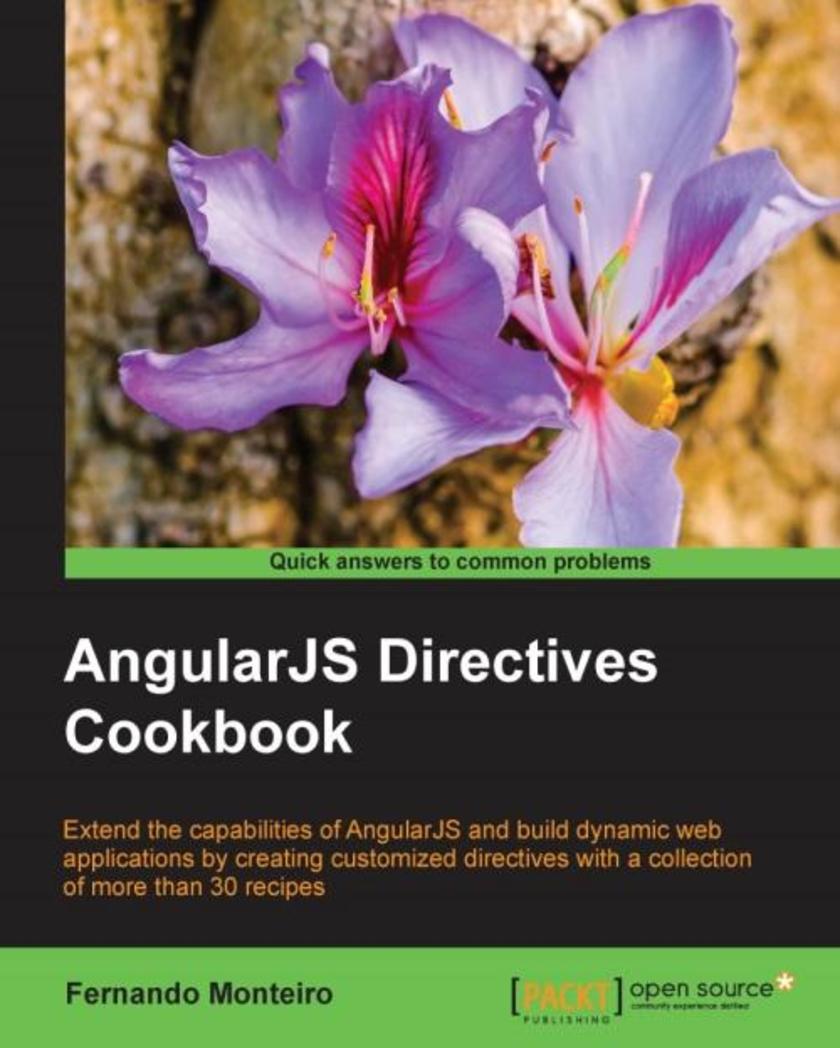
AngularJS Directives Cookbook
¥71.93
Extend the capabilities of AngularJS and build dynamic web applications by creating customized directives with this selection of more than 30 recipes About This Book Learn how to extend HTML templates in new ways to build even better web applications with exceptional interface components Build reusable directives for large-scale AngularJS applications Create even sophisticated and impressive modern web apps with ease Who This Book Is For This book is for developers with AngularJS experience who want to extend their knowledge to create or customize directives in any type of AngularJS application. Some experience of modern tools such as Yeoman and Bower would be helpful, but is not a requirement. What You Will Learn Build and customize external HTML templates, and create simple, effective directives for common interface components Learn how to use Controller function and any Bootstrap UI directives to manipulate the DOM and how to transform any UI library into AngularJS directives Construct an AngularJS application to use shared components and validate your HTML5 Discover how to use jQuery events and manipulate the DOM using jQuery UI inside AngularJS applications Create custom directives for ongoing projects using Yeoman generators, and find out how to implement standalone directives Build reusable directives for Large AngularJS applications and extend directives to use dynamic templates Write unit test for directives using the Karma runner and Jasmine’s behavior-driven development framework In Detail AngularJS directives are at the center of what makes it such an exciting – and important - web development framework. With directives, you can take greater control over HTML elements on your web pages – they ‘direct’ Angular’s HTML compiler to behave in the way you want it to. It makes building modern web applications a much more expressive experience, and allows you to focus more closely on improving the way that user interaction impacts the DOM and the way your app manages data. If you’re already using Angular, you probably recognize the power of directives to transform the way you understand and build your projects – but customizing and creating your own directives to harness AngularJS to its full potential can be more challenging. This cookbook shows you how to do just that – it’s a valuable resource that demonstrates how to use directives at every stage in the workflow. Packed with an extensive range of solutions and tips that AngularJS developers shouldn’t do without, you’ll find out how to make the most of directives. You’ll find recipes demonstrating how to build a number of different user interface components with directives, so you can take complete control over how users interact with your application. You’ll also learn how directives can simplify the way you work by creating reusable directives – by customizing them with Yeoman you can be confident that you’re application has the robust architecture that forms the bedrock of the best user experiences. You’ll also find recipes that will help you learn how to unit test directives, so you can be confident in the reliability and performance of your application. Whether you’re looking for guidance to dive deeper into AngularJS directives, or you want a reliable resource, relevant to today’s web development challenges, AngularJS Directives Cookbook delivers everything you need in an easily accessible way. Style and approach This book easy-to-follow guide is packed with hands-on recipes to help you build modular AngularJS applications with custom directives. It presents tips on using the best tools and various ways to use these tools for front-end development.
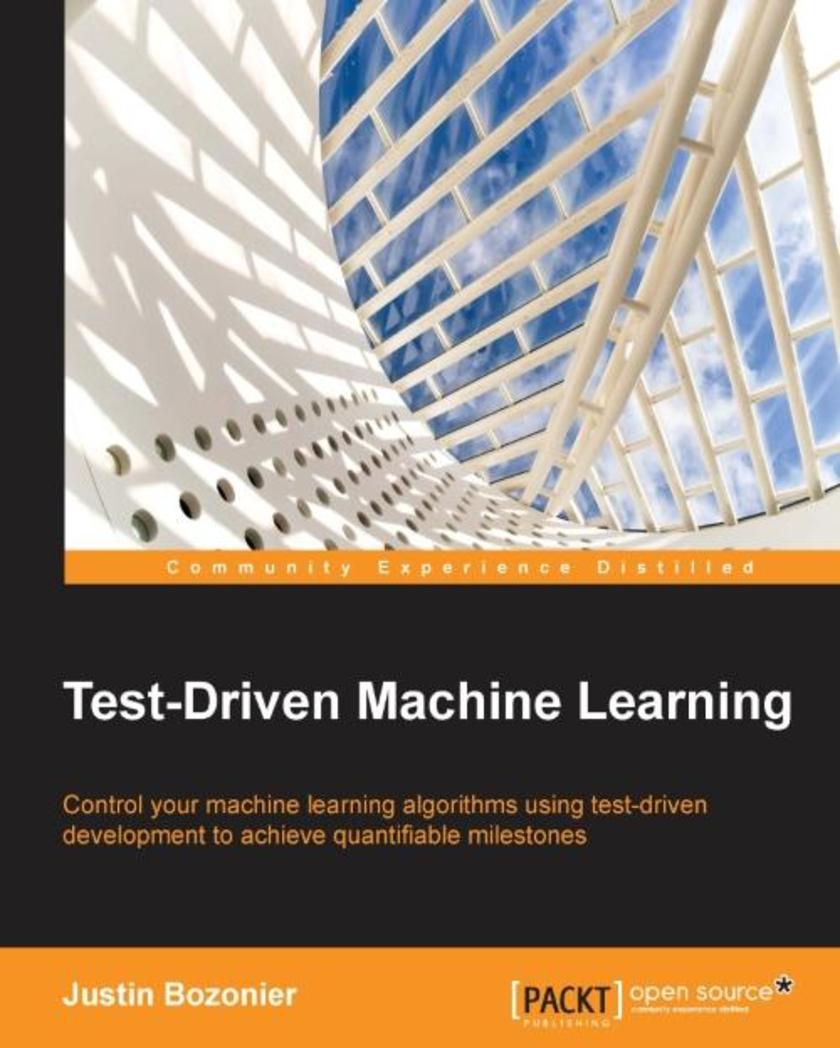
Test-Driven Machine Learning
¥71.93
Control your machine learning algorithms using test-driven development to achieve quantifiable milestones About This Book Build smart extensions to pre-existing features at work that can help maximize their value Quantify your models to drive real improvement Take your knowledge of basic concepts, such as linear regression and Na?ve Bayes classification, to the next level and productionalize their models Play what-if games with your models and techniques by following the test-driven exploration process Who This Book Is For This book is intended for data technologists (scientists, analysts, or developers) with previous machine learning experience who are also comfortable reading code in Python. You may be starting, or have already started, a machine learning project at work and are looking for a way to deliver results quickly to enable rapid iteration and improvement. Those looking for examples of how to isolate issues in models and improve them will find ideas in this book to move forward. What You Will Learn Get started with an introduction to test-driven development and familiarize yourself with how to apply these concepts to machine learning Build and test a neural network deterministically, and learn to look for niche cases that cause odd model behaviour Learn to use the multi-armed bandit algorithm to make optimal choices in the face of an enormous amount of uncertainty Generate complex and simple random data to create a wide variety of test cases that can be codified into tests Develop models iteratively, even when using a third-party library Quantify model quality to enable collaboration and rapid iteration Adopt simpler approaches to common machine learning algorithms Take behaviour-driven development principles to articulate test intent In Detail Machine learning is the process of teaching machines to remember data patterns, using them to predict future outcomes, and offering choices that would appeal to individuals based on their past preferences. Machine learning is applicable to a lot of what you do every day. As a result, you can’t take forever to deliver your first iteration of software. Learning to build machine learning algorithms within a controlled test framework will speed up your time to deliver, quantify quality expectations with your clients, and enable rapid iteration and collaboration. This book will show you how to quantifiably test machine learning algorithms. The very different, foundational approach of this book starts every example algorithm with the simplest thing that could possibly work. With this approach, seasoned veterans will find simpler approaches to beginning a machine learning algorithm. You will learn how to iterate on these algorithms to enable rapid delivery and improve performance expectations. The book begins with an introduction to test driving machine learning and quantifying model quality. From there, you will test a neural network, predict values with regression, and build upon regression techniques with logistic regression. You will discover how to test different approaches to na?ve bayes and compare them quantitatively, along with how to apply OOP (Object-Oriented Programming) and OOP patterns to test-driven code, leveraging SciKit-Learn. Finally, you will walk through the development of an algorithm which maximizes the expected value of profit for a marketing campaign by combining one of the classifiers covered with the multiple regression example in the book. Style and approach An example-driven guide that builds a deeper knowledge and understanding of iterative machine learning development, test by test. Each topic develops solutions using failing tests to illustrate problems; these are followed by steps to pass the tests, simply and straightforwardly. Topics which use generated data explore how the data was generated, alongside explanations of the assumptions behind different machine learning techniques.

Getting Started with SpriteKit
¥71.93
Develop fun and exciting games and create amazing animations for your existing apps with SpriteKit, Apple's 2D game development frameworkAbout This BookLearn the key concepts of game development in iOSTake advantage of SpriteKit to create your own games and improve your appsFollow the step-by-step chapters to create a complete product ready to submit to the App StoreWho This Book Is ForGetting Started with SpriteKit is for beginner-level iOS developers who want to add an extra edge to their apps and create amazing games using SpriteKit. It doesn’t matter whether you have experience in iOS development or not as this book will show you the swift tricks you can use to create games.What You Will LearnCreate and configure a SpriteKit project from scratchLoad and manage the basic elements of games such as sprites, labels, and geometrical primitivesHandle touch events, detect collisions, and play sound audio filesCreate complex elements, animate sprites, and run the parallax effectComplete your games with key components such as a main menu, transitions between scenes, a tutorial, and the ability to load and save dataIncrease the efficiency of your device using the accelerometer or by adding shaders, lights, and shadowsGain complementary techniques such as creating or finding audio resources, applying SpriteKit to apps, or using third-party toolsIn DetailSpriteKit is Apple’s game engine to develop native iOS games. Strongly boosted by the Apple Inc., Cupertino, it has increased in popularity since its first release. This book shows you the solutions provided by SpriteKit to help you create any 2D game you can imagine and apply them to create animations that will highlight your existing apps.This book will give you the knowledge you need to apply SpriteKit to your existing apps or create your own games from scratch.Throughout the book, you will develop a complete game. The beautiful designs implemented in the game in this book will easily lead you to learn the basis of 2D game development, including creating and moving sprites, and adding them to a game scene. You will also discover how to apply advanced techniques such as collision detection, action execution, playing music, or running animations to give a more professional aspect to the game. You will finish your first game by learning how to add a main menu and a tutorial, as well as saving and loading data from and to the player’s device.Finally, you will find out how to apply some mobile games techniques such as accelerometer use or touch detection.Style and approachWritten in an informal way with plenty of illustrative screenshots, this easy-to-follow and practical guide will help you get the most from SpriteKit. The main part of the book provides step-by-step instructions to develop of a complete product, while the last chapters give you some complementary techniques than can be used in mobile 2D game development.
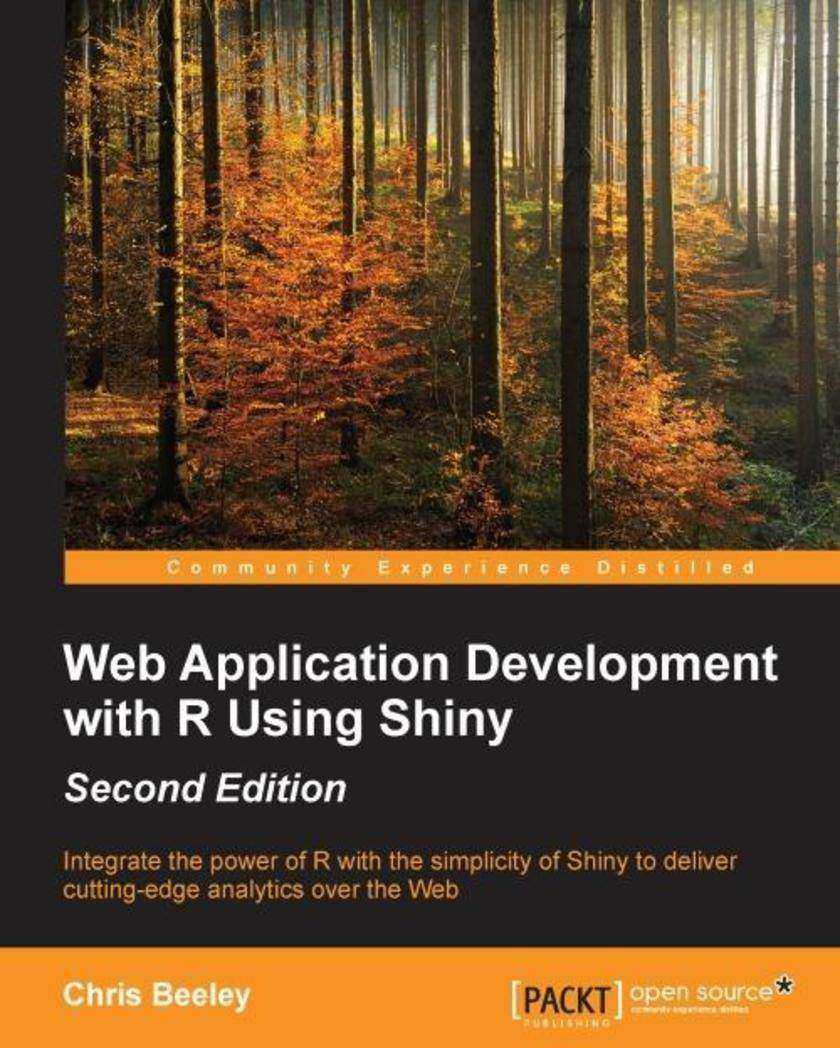
Web Application Development with R Using Shiny - Second Edition
¥71.93
Integrate the power of R with the simplicity of Shiny to deliver cutting-edge analytics over the WebAbout This BookUse Shiny's built-in functions to produce engaging user interfaces, and integrate them into your own web pagesImplement powerful user-contributed packages to access graphics from the web, make your own dashboards, use interactive maps, and moreExtend Shiny using JavaScript and jQuery with minimal coding using this handy, step-by-step guideWho This Book Is ForThis book is for anybody who wants to produce interactive data summaries over the web, whether you want to share them with a few colleagues or the whole world. No previous experience with R, Shiny, HTML, or CSS is required to begin using this book, although you should possess some previous experience with programming in a different language.What You Will LearnBuild interactive applications using Shiny's built-in widgetsUse the built-in layout functions in Shiny to produce user-friendly applicationsIntegrate Shiny applications with web pages and customize them using HTML and CSSHarness the power of JavaScript and jQuery to customize your applicationsEngage your users and build better analytics using interactive plotsDebug your applications using Shiny's built-in functionsDeliver simple and powerful analytics across your organization using Shiny dashboardsShare your applications with colleagues or over the Internet using cloud services or your own serverIn DetailR is a highly flexible and powerful tool for analyzing and visualizing data. Most of the applications built using various libraries with R are desktop-based. But what if you want to go on the webHere comes Shiny to your rescue!Shiny allows you to create interactive web applications using the excellent analytical and graphical capabilities of R. This book will guide you through basic data management and analysis with R through your first Shiny application, and then show you how to integrate Shiny applications with your own web pages. Finally, you will learn how to finely control the inputs and outputs of your application, along with using other packages to build state-of-the-art applications, including dashboards.Style and approachLearn by doing! Each chapter includes code and examples to use and adapt for your own applications. As the chapters progress, the code and examples are built upon until you have all the materials required to build a large, complex, real-world analytics application.
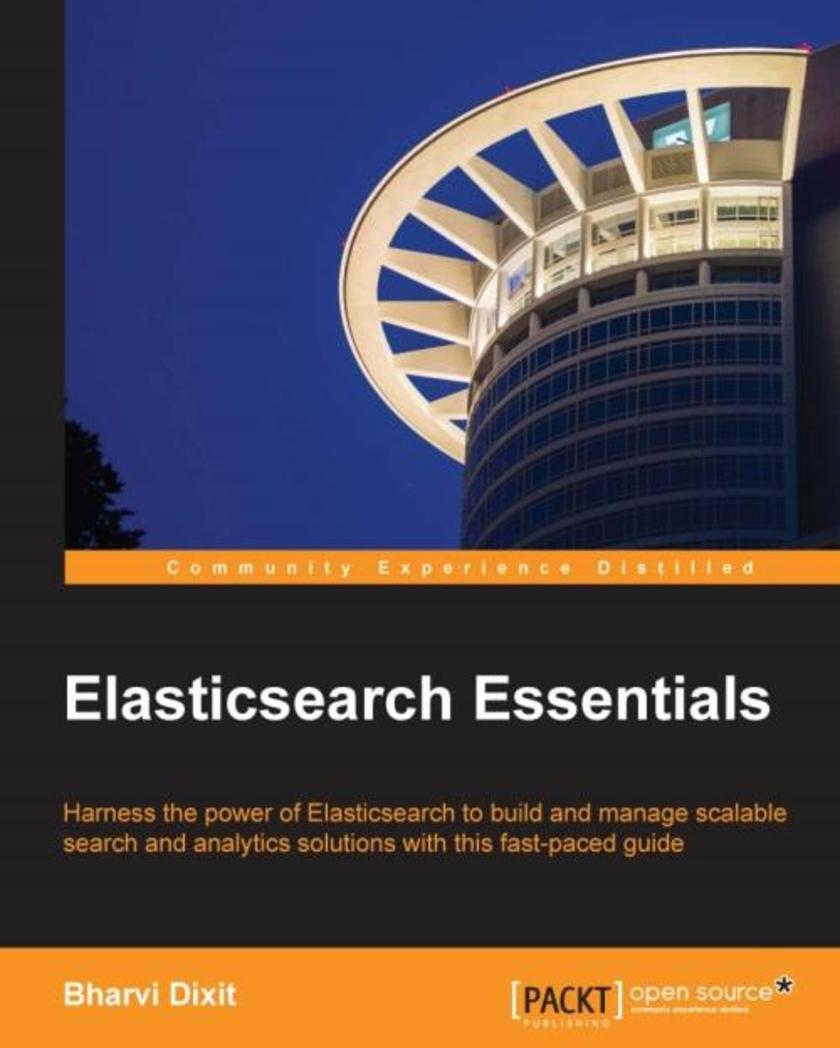
Elasticsearch Essentials
¥71.93
Harness the power of ElasticSearch to build and manage scalable search and analytics solutions with this fast-paced guideAbout This BookNew to ElasticSearchHere’s what you need—a highly practical guide that gives you a quick start with ElasticSearch using easy-to-follow examples; get up and running with ElasticSearch APIs in no timeGet the latest guide on ElasticSearch 2.0.0, which contains concise and adequate information on handling all the issues a developer needs to know while handling data in bulk with search relevancyLearn to create large-scale ElasticSearch clusters using best practicesLearn from our experts—written by Bharvi Dixit who has extensive experience in working with search servers (especially ElasticSearch)Who This Book Is ForAnyone who wants to build efficient search and analytics applications can choose this book. This book is also beneficial for skilled developers, especially ones experienced with Lucene or Solr, who now want to learn Elasticsearch quickly.What You Will LearnGet to know about advanced Elasticsearch concepts and its REST APIsWrite CRUD operations and other search functionalities using the ElasticSearch Python and Java clientsDig into wide range of queries and find out how to use them correctlyDesign schema and mappings with built-in and custom analyzersExcel in data modeling concepts and query optimizationMaster document relationships and geospatial dataBuild analytics using aggregationsSetup and scale Elasticsearch clusters using best practicesLearn to take data backups and secure Elasticsearch clustersIn DetailWith constantly evolving and growing datasets, organizations have the need to find actionable insights for their business. ElasticSearch, which is the world's most advanced search and analytics engine, brings the ability to make massive amounts of data usable in a matter of milliseconds. It not only gives you the power to build blazing fast search solutions over a massive amount of data, but can also serve as a NoSQL data store.This guide will take you on a tour to become a competent developer quickly with a solid knowledge level and understanding of the ElasticSearch core concepts. Starting from the beginning, this book will cover these core concepts, setting up ElasticSearch and various plugins, working with analyzers, and creating mappings. This book provides complete coverage of working with ElasticSearch using Python and performing CRUD operations and aggregation-based analytics, handling document relationships in the NoSQL world, working with geospatial data, and taking data backups. Finally, we’ll show you how to set up and scale ElasticSearch clusters in production environments as well as providing some best practices.Style and approachThis is an easy-to-follow guide with practical examples and clear explanations of the concepts. This fast-paced book believes in providing very rich content focusing majorly on practical implementation. This book will provide you with step-by-step practical examples, letting you know about the common errors and solutions along with ample screenshots and code to ensure your success.
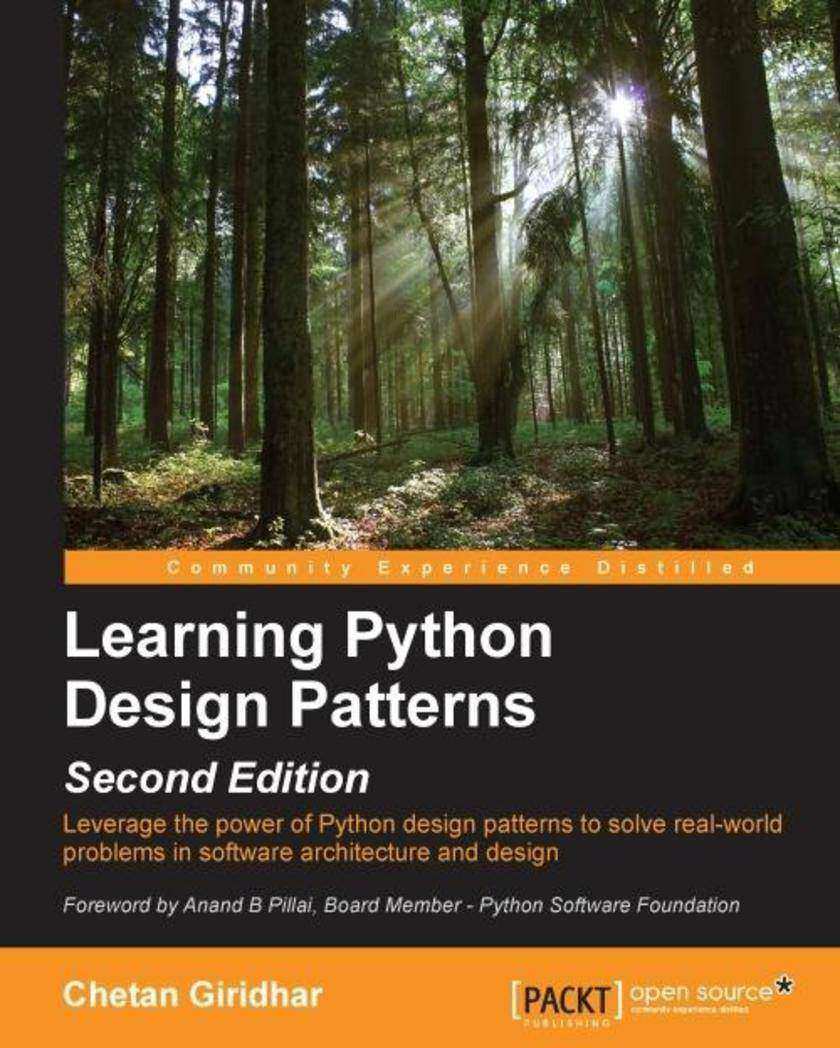
Learning Python Design Patterns - Second Edition
¥71.93
Leverage the power of Python design patterns to solve real-world problems in software architecture and designAbout This BookUnderstand the structural, creational, and behavioral Python design patternsGet to know the context and application of design patterns to solve real-world problems in software architecture, design, and application developmentGet practical exposure through sample implementations in Python v3.5 for the design patterns featuredWho This Book Is ForThis book is for Software architects and Python application developers who are passionate about software design. It will be very useful to engineers with beginner level proficiency in Python and who love to work with Python 3.5What You Will LearnEnhance your skills to create better software architectureUnderstand proven solutions to commonly occurring design issuesExplore the design principles that form the basis of software design, such as loose coupling, the Hollywood principle and the Open Close principle among othersDelve into the object-oriented programming concepts and find out how they are used in software applicationsDevelop an understanding of Creational Design Patterns and the different object creation methods that help you solve issues in software developmentUse Structural Design Patterns and find out how objects and classes interact to build larger applicationsFocus on the interaction between objects with the command and observer patternsImprove the productivity and code base of your application using Python design patternsIn DetailWith the increasing focus on optimized software architecture and design it is important that software architects think about optimizations in object creation, code structure, and interaction between objects at the architecture or design level. This makes sure that the cost of software maintenance is low and code can be easily reused or is adaptable to change. The key to this is reusability and low maintenance in design patterns.Building on the success of the previous edition, Learning Python Design Patterns, Second Edition will help you implement real-world scenarios with Python’s latest release, Python v3.5.We start by introducing design patterns from the Python perspective. As you progress through the book, you will learn about Singleton patterns, Factory patterns, and Fa?ade patterns in detail. After this, we’ll look at how to control object access with proxy patterns. It also covers observer patterns, command patterns, and compound patterns.By the end of the book, you will have enhanced your professional abilities in software architecture, design, and development.Style and approachThis is an easy-to-follow guide to design patterns with hands-on examples of real-world scenarios and their implementation in Python v3.5. Each topic is explained and placed in context, and for the more inquisitive, there are more details on the concepts used.
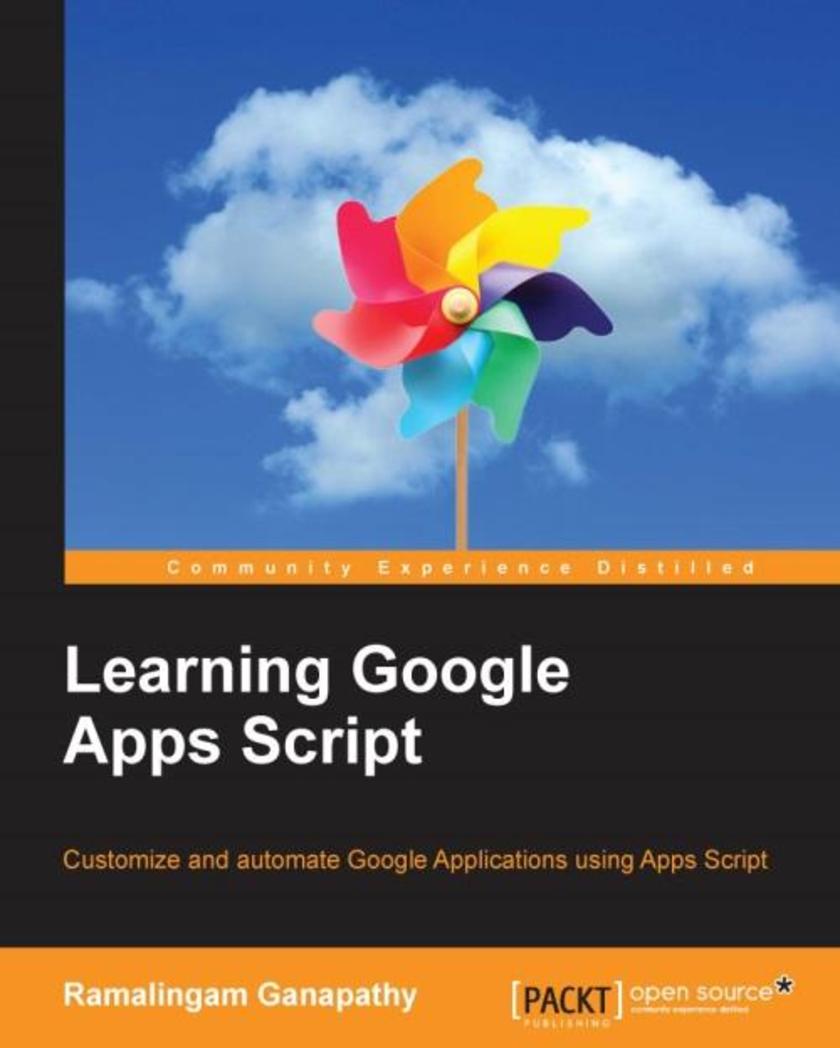
Learning Google Apps Script
¥71.93
Customize and automate Google Applications using Apps Script About This Book Gain insight into customizing and automating Google applications with JavaScript Create add-ons for Google Sheets, Docs, or Forms; automate your workflow; integrate with external APIs; and more. A step-by-step guide to building real-world solutions Who This Book Is For Newbies to google apps * but having practical experience in Java*. What You Will Learn Learn about the Google Apps * platform and work with *s to develop Google apps Create custom menus and dialogs Parse and send emails Generate Google calendar events Build Translator and RSS reader applications Develop interactive web pages Design interactive web-forms Form a workflow application In Detail Google Apps Script is a cloud-based *ing language based on JavaScript to customize and automate Google applications. Apps Script makes it easy to create and publish add-ons in an online store for Google Sheets, Docs, and Forms. It serves as one single platform to build, code, and ultimately share your App on the Web store. This book begins by covering the basics of the Google application platform and goes on to empower you to automate most of the Google applications. You will learn the concepts of creating a menu, sending mails, building interactive web pages, and implementing all these techniques to develop an interactive Web page as a form to submit sheets You will be guided through all these tasks with plenty of screenshots and code snippets that will ensure your success in customizing and automating various Google applications This guide is an invaluable tutorial for beginners who intend to develop the skills to automate and customize Google applications Style and approach An easy-to-follow yet comprehensive guide, filled with many code examples and screenshots illustrating various Google Apps *s.

Mastering matplotlib
¥71.93
If you are a scientist, programmer, software engineer, or student who has working knowledge of matplotlib and now want to extend your usage of matplotlib to plot complex graphs and charts and handle large datasets, then this book is for you.
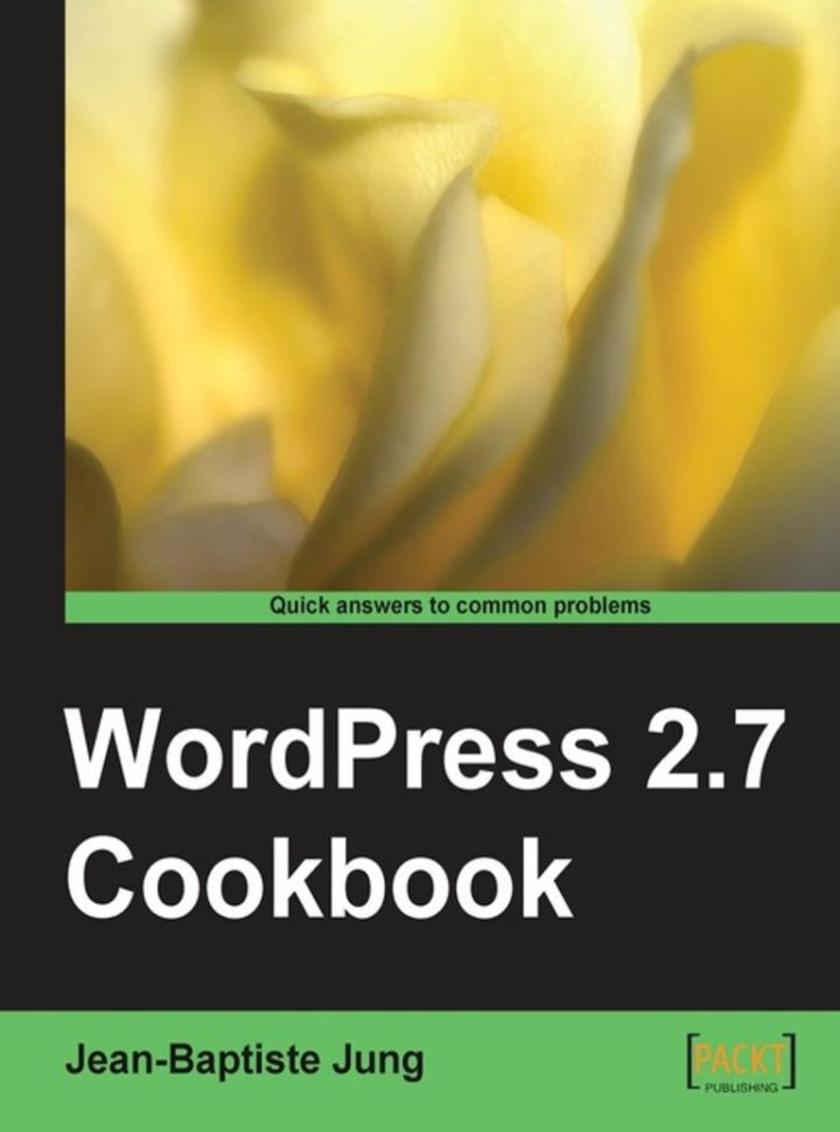
WordPress 2.7 Cookbook
¥71.93
This is a Packt Cookbook, which means it contains step-by-step instructions to achieve a particular goal or solve a particular problem. The book can be read chapter by chapter, or you can look at the table of contents and read the recipes in no particular order. This book is for anyone who wants to enhance their WordPress blog to make it engaging and feature-rich. It is not specifically for developers or programmers; rather it can be used by anyone who wants to get more out of their WordPress blog by following step-by-step instructions. A basic knowledge of PHP/XHTML/CSS/WordPress is desirable but not necessary.
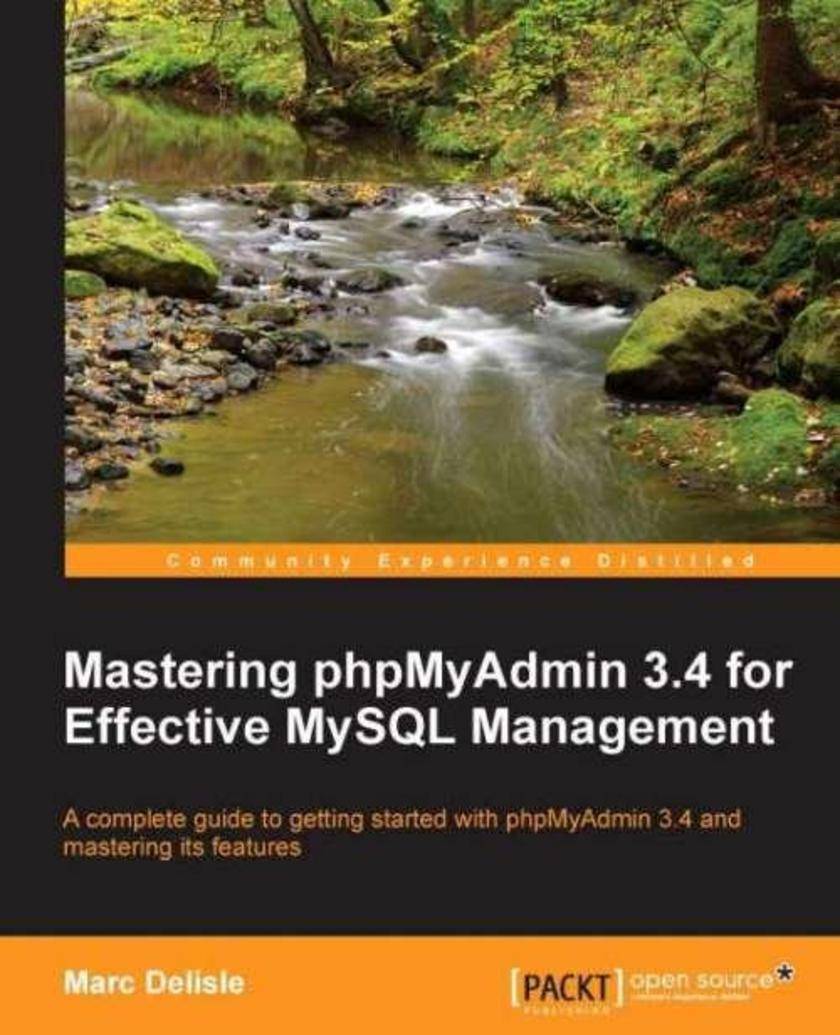
Mastering phpMyAdmin 3.4 for Effective MySQL Management
¥71.93
This is a step-by-step instructional guide to get you started easily with phpMyAdmin and teach you to manage and perform database functions on your database. You will first be introduced to the interface and then build basic tables and perform both simple and advanced functions on the created database. The book progresses gradually and you will follow it best by reading it sequentially. If you are a developer, system administrator, or web designer who wants to manage MySQL databases and tables efficiently, then this book is for you. This book assumes that you are already wellacquainted with MySQL basics. This book is a must-read for every serious phpMyAdmin user who would like to use this outstanding application to its full power.
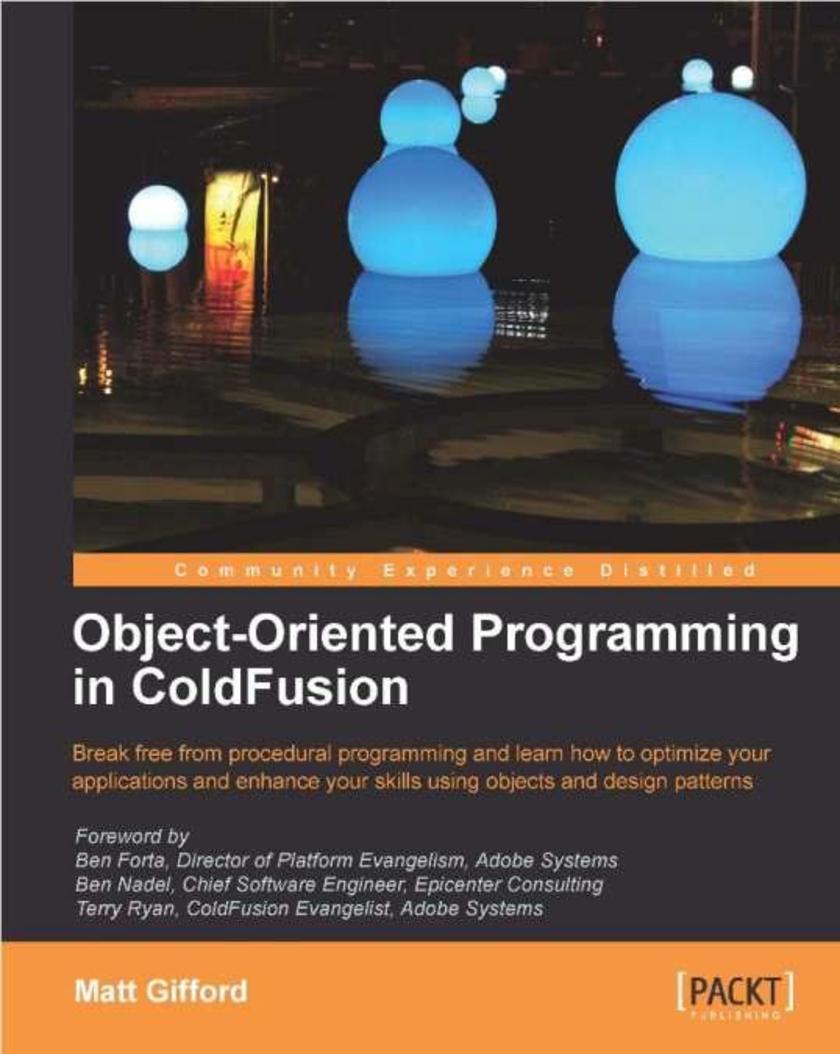
Object-Oriented Programming in ColdFusion
¥71.93
This book is a fast-paced tutorial to developing ColdFusion applications using an object-oriented programming approach. Complete with code examples that can be altered and applied to your application and careful explanations, this book will guide you through your first interaction with object-oriented programming within your ColdFusion applications. If you are a web developer wanting to implement object-oriented programming with ColdFusion, then this book is for you. If your goal is to get a good grounding in the basics of object-oriented programming concepts, this book is perfect for you. No prior knowledge of object-oriented programming is expected, but basic knowledge of ColdFusion development skills is assumed.
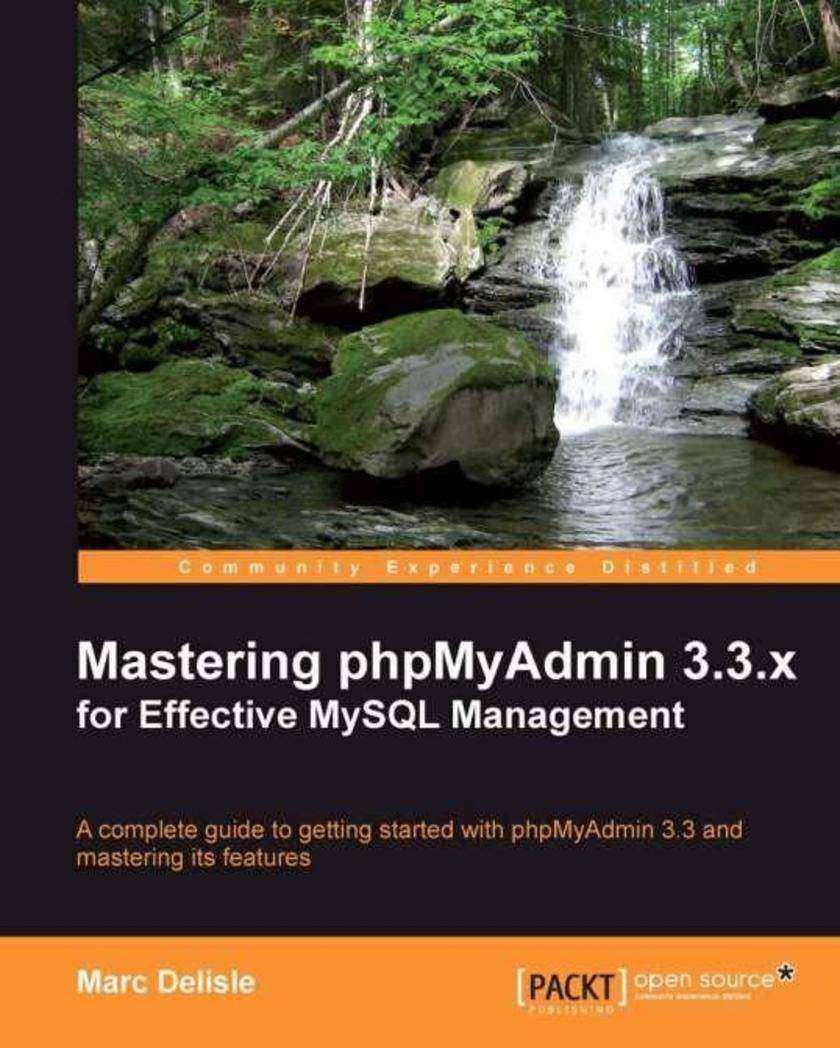
Mastering phpMyAdmin 3.3.x for Effective MySQL Management
¥71.93
This is a step-by-step instructional guide to get you started easily with phpMyAdmin and teach you to manage and perform database functions on your database. You will first be introduced to the interface and then build basic tables and perform both simple and advanced functions on the created database. The book progresses gradually and you will follow it best by reading it sequentially. If you are a developer or system administrator or web designer who wants to manage MySQL databases and tables efficiently, this book is for you. This book assumes you already are well acquainted with MySQL basics. This book is a must-read for every serious phpMyAdmin user who would like to use this outstanding application to its full power.




 购物车
购物车 个人中心
个人中心



